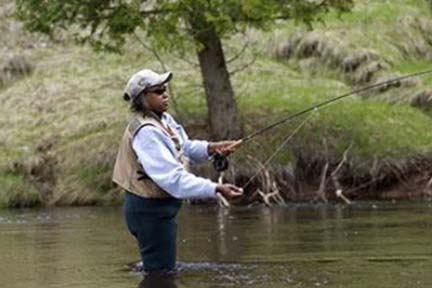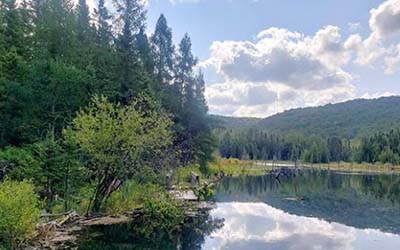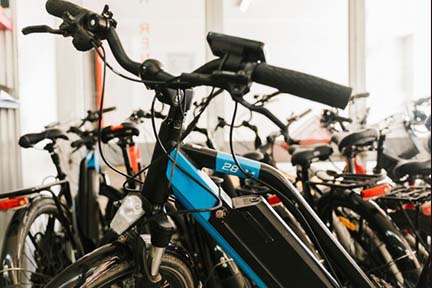| Here are a few of this week’s stories from the Michigan Department of Natural Resources:
See other news releases, Showcasing the DNR stories, photos and other resources at Michigan.gov/DNRPressRoom.
PHOTO FOLDER: Larger, higher-res versions of some of the images used below, and others, are available in this folder. Least sandpiper photo courtesy Elizabeth Boehm/Audubon Photography Awards.

Though forest management activities like timber harvesting, tree planting, prescribed burning and others are ongoing in sections of the state forest, the Department of Natural Resources is planning for 2026. If you’d like to learn about those plans, the forest management open houses, compartment reviews and public comment periods happening now through mid-October are a great place to start.
It takes a lot of preparation to determine the right mix of actions to keep our state forests healthy and thriving, and public input on these plans is an important part of the process. Here are the remaining opportunities to attend open houses (to learn about proposed plans and share feedback) and compartment reviews (where final decisions are made):
Cadillac FMU
- Open house Tuesday, Aug. 20, 3-6 p.m. at the Carl T. Johnson Hunting and Fishing Center in Cadillac. Compartment review Tuesday, Sept. 10. Contact: Dave Fisher, 231-745-4651, ext. 2317459064.
Sault Ste. Marie FMU
- Open house Thursday, Aug. 29, 3-7 p.m. at the DNR Customer Service Center in Sault Ste. Marie. Compartment review Tuesday, Oct. 1. Contact: Josh Brinks, 906-635-6161, ext. 2.
Shingleton FMU
- Open house Thursday, Sept. 12, 3-7 p.m. at the DNR field office in Shingleton. Compartment review Tuesday, Oct. 8. Contact: Bob Burnham, 906-420-1645.
Gwinn FMU
- Open house Thursday, Sept. 19, 3-6 p.m. at the Sands Township Office in Gwinn. Compartment review Thursday, Oct. 10. Contact: Mike Brodeur, 906-346-9201, ext. 103.
Newberry FMU
- Open house Thursday, Oct. 3, 3-7 p.m. at the DNR field office in Newberry. Compartment review Tuesday, Oct. 22. Contact: Keith Magnusson, 906-293-3293, ext. 4740.
|

The tour will begin at the wildlife management area, at the dead end of Portage Point 11.4 Lane, in Escanaba. DNR experts will lead the tour along the 1-mile loop trail, which includes 0.6 miles of unpaved trails along a historic dike system, and a 0.4-mile beach walk along Lake Michigan. The event is free, no RSVP required, and all ages are encouraged to attend.
Portable restrooms, picnic tables and trash receptacles will be available. Please bring your own binoculars or a scope if you have them. Some binoculars will be available to borrow.
We highly encourage participants download one or more of the following smartphone apps: eBird, iNaturalist, Merlin Bird ID, Audubon Bird Guide. Dress for the weather and wear sturdy shoes, as we will be walking along unpaved trails with uneven ground. Please be aware that the trail system is not fully accessible according to Americans with Disabilities Act guidelines.
This birding tour is presented in partnership with MI Birds, a public outreach and education program created by Audubon Great Lakes and the DNR. MI Birds aims to deepen all Michiganders’ engagement in the understanding, care and stewardship of public lands that are important for birds and local communities.
|

The DNR’s Escanaba Pocket Park may be small in size, but it’s big on creative outdoor activities and programs. Located within the Upper Peninsula State Fairgrounds, the park is open throughout the summer with free admission. Visitors can enjoy catch-and-release fishing in the pond stocked with bluegill, as well as archery and pellet gun ranges, a fire tower, wildflower gardens and an indoor classroom space.
On Wednesday, Aug. 21, from 1 to 4 p.m., park interpreter Jalen Sims will introduce park visitors to something a little different: a game of Dungeons & Dragons that focuses on an epic hunting adventure.
“The idea came as I thought about ways to get different audiences into the park. I like playing D&D, so I thought this would be a great way to connect hunting and fishing into the tabletop game,” said Sims.
Whether you’re an experienced D&D player or new to the game, visitors are invited to join for an afternoon of cooperative role-playing, storytelling and fun. By taking on unique personas and banding together, the players will explore a fantasy world and complete a challenging and creative quest.
“The game is designed to immerse the group in a world where they will have to take part in hunting, fishing, tracking, identifying plants, foraging and practicing survival skills,” Sims said. “Then the goal is to remind them that they can do all of this in their own lives in a natural world that can be every bit as intriguing and fantastical as the D&D realm.”
This unique offering is just one example of the type of programming the DNR’s explorer guides offer. With offerings ranging from mushroom identification to astronomy and even Yooperlight hunting – the search for seemingly normal, gray rocks that are rich with fluorescent sodalite and glow orange and yellow under UV light – there is a free, educational program for everyone at over two dozen state parks.
|

As you stroll through the 9,762 acres of Hartwick Pines State Park, you’re normally greeted by the chirps of songbirds and creaks of old-growth pines slowly swaying in the wind, but during Black Iron Day (Aug. 24-25, from 10 a.m. to 3 p.m.), visitors will hear the dull clang of metal against metal and the hum of a steam-powered sawmill and experience the tangy scent of coal smoke.
The Friends of Harwick Pines State Park has hosted the event for over 40 years, welcoming blacksmiths and metal artisans from across the state for live demonstrations of their craft. Visitors will also be able to see the park’s 1914 steam engine in action, view a working sawmill and tour the park’s historical logging museum. A Recreation Passport is required for vehicle entrance to the park, but the event is free for the public, and pieces from the artisans will also be available for purchase.
“The logging industry shaped our population, our economy and our landscape in huge ways, and it is really important tell the stories of the people who did that work and to showcase that aspect of Michigan’s past,” said Hillary Pine, DNR historical interpreter. “It’s exciting to see the past come to life through the sights, smells and sounds of this event and to highlight the skills of these artisans.”
Home to a year-round visitor center with a gift shop, miles of hiking trails and a modern campground and some of the only remaining old-growth pine forests in the state, Hartwick Pines is conveniently located near Grayling along the I-75 corridor, making it ideal as a quick stop on the way to the Upper Peninsula or as the prime destination for a weekend getaway.
“Our state parks are home to many natural and cultural resources that show a very important part of Michigan’s past,” Pine said. “We encourage everyone to come out and learn more about them.”
In addition to Black Iron Days, the park offers a wide range of programming for the public, focusing on everything from maple syrup making to lantern-lit snowshoe hikes. Events like this and more can be found at Michigan.gov/DNRCalendar.
Questions about programs at Hartwick Pines? Contact Craig Kasmer, Hartwick Pines park interpreter, at 989-348-2537.
|
 See more pictures by Michigan state parks photo ambassadors at Instagram.com/MiStateParks. For more on the program, call Stephanie Yancer at 989-274-6182. (This photo is by Sarahbeth Ramsey, for the Michigan DNR, at Ludington State Park in Mason County.) See more pictures by Michigan state parks photo ambassadors at Instagram.com/MiStateParks. For more on the program, call Stephanie Yancer at 989-274-6182. (This photo is by Sarahbeth Ramsey, for the Michigan DNR, at Ludington State Park in Mason County.)
|













